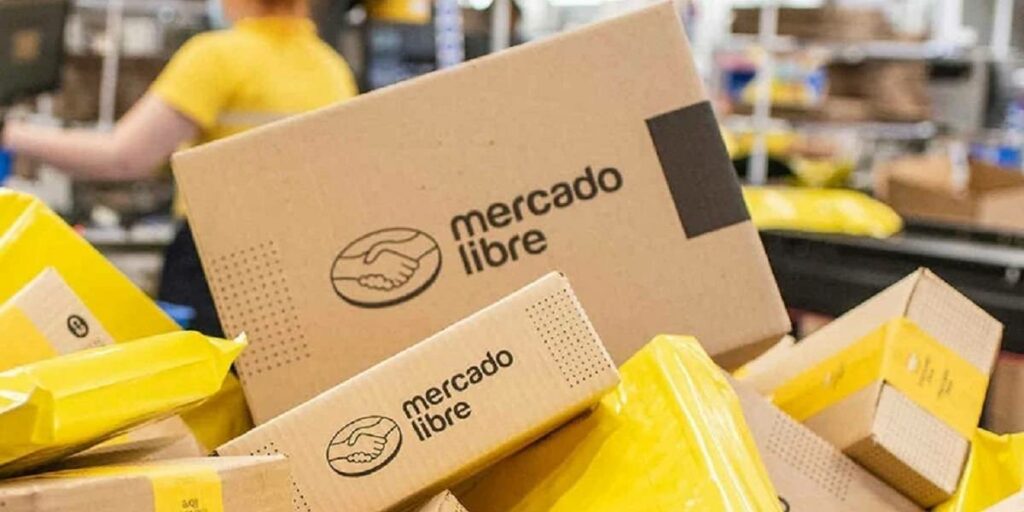In the fast-paced world of e-commerce, businesses must rely on cutting-edge technology and adaptable infrastructure to stay ahead of the competition. One such company that has managed to carve out a significant market share in Latin America is MercadoLibre.
Often dubbed as the “Amazon of Latin America,” this e-commerce giant has grown exponentially, thanks to MercadoLibre tech stack and cloud infrastructure.
We’ll explore the various components that makeup MercadoLibre’s technology arsenal, from programming languages and frameworks to their reliance on cloud computing services.
By delving into the inner workings of MercadoLibre’s tech stack, we aim to provide valuable insights for businesses and developers alike, showcasing how combining the right technologies can lead to unparalleled growth and success.

Frontend technologies of MercadoLibre Tech Stack
MercadoLibre has invested in a diverse set of frontend technologies to deliver a seamless and high-performance user experience to millions of customers across the region.
TypeScript: TypeScript, a superset of JavaScript, is one of the core frontend languages used at MercadoLibre. It offers optional static typing and improved tooling, making it easier for developers to write maintainable and scalable code.
React Native: MercadoLibre utilizes React Native, a popular open-source framework, for developing their mobile applications. React Native allows developers to create native mobile apps for iOS and Android using JavaScript and React.
Angular: Angular, a popular web application framework developed by Google, is another key technology in MercadoLibre’s frontend stack. Angular enables developers to build dynamic and responsive web applications with a component-based architecture, making it easier to manage complex projects.
Next.js: MercadoLibre also incorporates Next.js, a lightweight framework for building server-rendered React applications. Next.js offers features such as automatic code-splitting and server-side rendering, which help improve the performance and user experience of web applications.
Angular Material UI: To create a consistent and modern user interface, MercadoLibre employs Angular Material UI, a component library based on Google’s Material Design guidelines. This library provides a wide range of pre-built UI components and themes, streamlining the development process and ensuring a cohesive visual experience across the platform.
Bootstrap: MercadoLibre leverages Bootstrap, a widely-used CSS framework, to build responsive and mobile-first web applications. Bootstrap provides a collection of customizable HTML, CSS, and JavaScript components that simplify frontend development and ensure cross-browser compatibility.
HTML5 & SCSS: MercadoLibre’s frontend developers utilize HTML5, the latest version of the HTML standard, and SCSS, a CSS preprocessor, to create and style web pages. Both technologies enable developers to write clean, modular, and maintainable code.
Highcharts: To visualize data and create interactive charts, MercadoLibre incorporates Highcharts, a popular JavaScript charting library. Highcharts offers a wide variety of chart types and customization options, making it easy to create visually appealing and informative graphs.
Git: MercadoLibre’s development teams rely on Git, a distributed version control system, to manage their code repositories. Git enables efficient collaboration among developers and helps maintain a clean and organized codebase.
Read more: Understanding eCommerce Business Model: A Beginner’s Guide
Backend technologies of MercadoLibre Tech Stack
MercadoLibre tech stack consists of various backend technologies that help the eCommerce platform manage data, improve scalability, and enhance performance. Some of the key backend technologies include:
Node.js: This is a JavaScript runtime built on Chrome’s V8 engine, which allows developers to build fast and scalable network applications. MercadoLibre tech stack uses Node.js to handle server-side operations efficiently.
Java: A popular and versatile programming language, Java is used by MercadoLibre’s backend developers to build robust, secure, and scalable applications. Java provides a strong foundation for their services and allows for easy integration of various tools and libraries.
Go: MercadoLibre turned to Go for its scalability, clean and efficient code, and increased developer productivity. Go applications handle approximately half of MercadoLibre’s traffic, enabling the company to achieve significant cost savings while improving response times.
Docker: MercadoLibre tech stack uses Docker containers to virtualize their development and deploy their microservices via the Docker Engine. This technology provides a streamlined, consistent environment for building, deploying, and managing applications, which improves workflow and reduces resource consumption.
Grails and Groovy: Historically, much of MercadoLibre’s stack was based on Grails (a web application framework) and Groovy (a dynamic language) backed by relational databases. Although the company has transitioned to other technologies like Go, Grails and Groovy might still be present in some parts of their backend systems.
Fury: MercadoLibre developers use this platform-as-a-service tool to build, deploy, monitor, and manage services in a cloud-agnostic way. Fury streamlines the development process by providing a unified environment for working with various tools and technologies.

Read more: Emerging Trends in The E-commerce Mobile App Industry
Infrastructure technologies of MercadoLibre Tech Stack
MercadoLibre’s cloud infrastructure tech stack includes the following technologies:
OpenStack: MercadoLibre initially relied on OpenStack, an open-source cloud computing platform that enables organizations to manage and deploy their own cloud infrastructure. This provided flexibility and control over their IT infrastructure but faced performance limitations.
SolidFire: To address the performance issues with OpenStack, MercadoLibre turned to SolidFire, a scale-out storage system that delivers predictable performance, faster response times, and better system administration. It seamlessly integrated with MercadoLibre’s existing cloud framework and significantly improved their storage infrastructure. SolidFire’s inline deduplication and compression also reduced their data footprint by 6.5 times.
Google Analytics: MercadoLibre tech stack uses Google Analytics, a tracking tool that helps businesses analyze website traffic and gain insights into user behavior. This enables them to optimize their e-commerce platform and make data-driven decisions for growth.
Conclusion
By leveraging a versatile mix of programming languages and frameworks, such as Node.js, Java, Go, Docker, Grails, Groovy, and Fury, the company has managed to build a scalable, secure, and high-performing platform that caters to millions of users. Their cloud infrastructure, consisting of OpenStack, SolidFire, and Google Analytics, further solidifies their position as a leading online marketplace.
While this article covers the primary technologies used, it’s important to note that MercadoLibre may employ additional tools and services to continuously evolve and improve their platform.
Ultimately, the company’s commitment to staying at the forefront of technological innovation is a testament to their dedication to providing an exceptional user experience and maintaining a competitive edge in the eCommerce industry.










